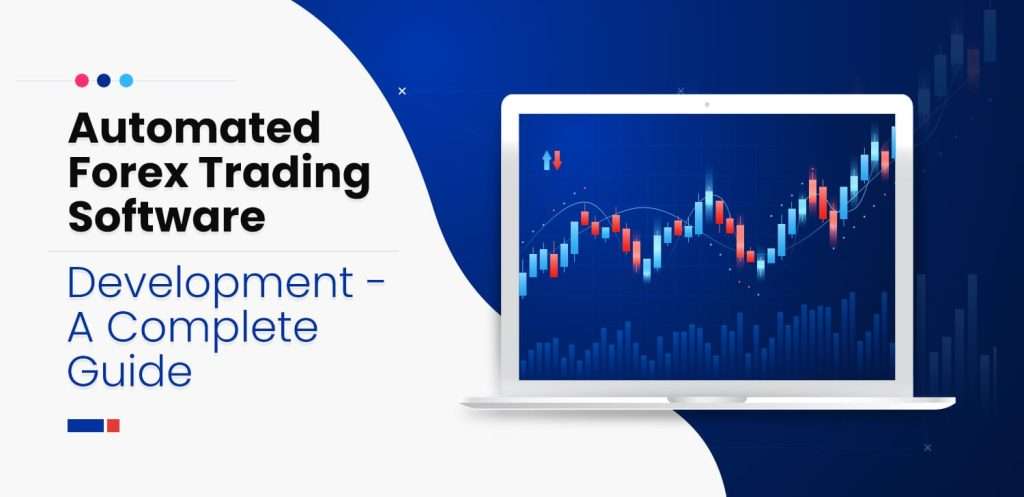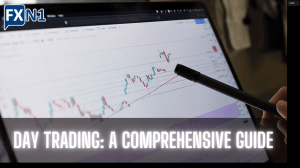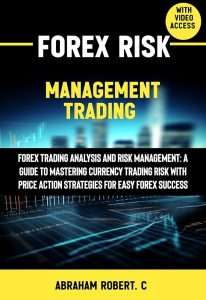A Comprehensive Guide to Automated Forex Trading
Unlock the potential of automated Forex trading! Learn the strategies and secrets to consistent profits. Master technical analysis and risk management for ultimate success. Start your journey to financial freedom today!

The allure of Forex automated trading is undeniable. The promise of consistent profits, round-the-clock market monitoring, and the elimination of emotional decision-making draws many traders. However, the reality is far more nuanced. Successful automated forex trading requires meticulous planning, thorough research, and a deep understanding of both the technical and fundamental aspects of the foreign exchange market. This comprehensive guide will delve into the intricacies of automated forex trading, exploring its benefits, challenges, and essential strategies for success.
Understanding the Fundamentals of Automated Forex Trading
Automated forex trading, also known as algorithmic trading or automated forex trading systems, utilizes computer programs to execute trades based on pre-defined parameters. These parameters, often derived from technical indicators, fundamental analysis, or a combination of both, dictate when to enter and exit positions. Unlike manual trading, automated systems operate 24/5, constantly scanning the market for opportunities. This constant vigilance is a key advantage, allowing for the capture of fleeting market movements that a human trader might miss.
Choosing the Right Automated Trading System
The selection of an appropriate automated trading system is a critical first step. The market offers a wide range of options, from readily available expert advisors (EAs) to custom-built systems tailored to specific trading strategies. Consider your trading experience, risk tolerance, and desired level of control when making your choice. A beginner might benefit from a simpler, pre-built system, while a more experienced trader might prefer the flexibility of a custom-designed system. Thoroughly researching and testing any system before live trading is crucial to minimize potential losses.
Backtesting and Optimization
Before deploying any automated trading system in a live trading environment, rigorous backtesting and optimization are essential. Backtesting involves simulating the system’s performance using historical market data. This process helps identify potential weaknesses and allows for adjustments to improve the system’s overall profitability and risk management. Optimization involves fine-tuning the system’s parameters to enhance its performance under various market conditions. It’s a crucial step in developing a robust and reliable automated trading strategy.
Key Strategies in Automated Forex Trading
Successful automated forex trading hinges on employing effective strategies. These strategies often incorporate a combination of technical and fundamental analysis, risk management techniques, and robust order management systems. A well-defined strategy provides a clear framework for decision-making, minimizing the impact of emotional biases and ensuring consistent execution.
Technical Analysis Strategies
Many automated trading systems rely heavily on technical analysis. Technical indicators, such as moving averages, relative strength index (RSI), and MACD, provide signals based on past price movements. These signals are then used to generate buy and sell orders automatically. Popular technical analysis strategies for automated trading include trend following, mean reversion, and breakout strategies. Each strategy has its own set of parameters and risk profiles that must be carefully considered.
Fundamental Analysis Strategies
While less common in purely automated systems, fundamental analysis can play a crucial role in informing trading decisions. Fundamental data, such as economic indicators, news events, and geopolitical factors, can influence currency movements. Integrating fundamental analysis into an automated system requires sophisticated algorithms that can interpret and react to news and economic data in real-time. This necessitates a high level of technical expertise.
Risk Management in Automated Forex Trading
Effective risk management is paramount in automated forex trading. Unlike manual trading where traders can react to sudden market shifts, automated systems execute trades based on pre-programmed rules. This makes it crucial to implement robust risk management measures to limit potential losses.
Position Sizing and Stop-Loss Orders
Position sizing determines the amount of capital allocated to each trade. It’s crucial to avoid over-leveraging, which can amplify losses significantly. Stop-loss orders automatically exit a position when the price reaches a predetermined level, limiting potential losses. These are essential components of any responsible automated trading strategy. Proper position sizing and stop-loss orders are critical to protecting your capital and ensuring the long-term sustainability of your trading.
Money Management Techniques
Effective money management techniques are vital for long-term success. Strategies like the fixed fractional system, the Kelly criterion, and the Martingale system each offer different approaches to managing risk and capital allocation. The choice of a money management strategy should align with your risk tolerance and overall trading goals. Understanding the implications of each technique is crucial before implementation.
The Advantages and Disadvantages of Automated Forex Trading
Automated forex trading offers numerous advantages, but it also comes with its own set of challenges. Weighing these pros and cons carefully is essential before embarking on this trading approach.
Advantages
- Elimination of Emotional Bias: Automated systems execute trades based on pre-defined rules, eliminating emotional decision-making that can lead to poor trading outcomes.
- 24/5 Market Monitoring: Automated systems constantly monitor the market, capturing trading opportunities that may be missed by human traders.
- Increased Efficiency: Automated systems can execute trades much faster than human traders, allowing for the capture of fleeting market movements.
- Backtesting and Optimization: Automated systems can be rigorously backtested and optimized to enhance their performance.
Disadvantages
- Technical Expertise Required: Developing and maintaining automated trading systems requires significant technical expertise.
- Risk of System Failures: Technical glitches or unexpected market events can lead to significant losses.
- Over-Optimization: Over-optimizing a system to past data can lead to poor performance in live trading.
- Initial Investment Costs: Developing and implementing automated trading systems can involve significant upfront costs.
Building Your Own Automated Forex Trading System
While using pre-built systems is an option, many traders choose to build their own automated trading systems. This offers greater flexibility and control, but also requires significant technical skills and knowledge. This process generally involves choosing a programming language, selecting appropriate indicators and strategies, and rigorously testing the system before live deployment.
Choosing a Programming Language
Several programming languages are commonly used for building automated trading systems, including MetaTrader 4 (MQL4) and MetaTrader 5 (MQL5), Python, and C++. The choice of language depends on factors such as familiarity, available libraries, and the complexity of the system. Each language offers different strengths and weaknesses; careful consideration is necessary.
Developing the Trading Logic
The core of any automated trading system is its trading logic. This involves defining the rules and parameters that determine when to enter and exit trades. This requires a thorough understanding of technical and fundamental analysis, as well as risk management principles. The logic should be clearly defined and documented to ensure transparency and ease of maintenance.
Developing and implementing a successful automated forex trading system is a challenging but potentially rewarding endeavor. It requires a deep understanding of the forex market, technical expertise in programming and data analysis, and a disciplined approach to risk management. While the promise of consistent profits is alluring, it’s crucial to approach this venture with realistic expectations and a commitment to continuous learning and adaptation. The market is dynamic and ever-changing, demanding constant vigilance and refinement of your strategies. Only through careful planning, rigorous testing, and a commitment to continuous improvement can you hope to achieve long-term success in this competitive field.
Remember, past performance is not indicative of future results. Automated trading, while potentially lucrative, carries significant risk. Always manage your risk effectively and never invest more than you can afford to lose. Continuous learning and adaptation are key to navigating the complexities of the forex market. Understanding the nuances of market dynamics, refining your strategies, and adapting to changing market conditions are essential for long-term success. Successful automated forex trading is a marathon, not a sprint.
The journey requires patience, perseverance, and a commitment to continuous improvement. Embrace the learning process, adapt to market changes, and never stop striving to refine your strategies. With dedication and the right approach, you can unlock the potential of automated forex trading and achieve your financial goals. However, always remember that the market is unpredictable and even the best-designed systems can experience setbacks. Maintain a balanced perspective, stay disciplined, and never underestimate the power of risk management.
By understanding the fundamentals, employing effective strategies, and managing risk effectively, you can significantly increase your chances of success in the world of automated forex trading.
The rewards can be substantial, but the path requires dedication and a willingness to learn and adapt. Embrace the challenge, and you might just find yourself on the path to consistent profitability.







